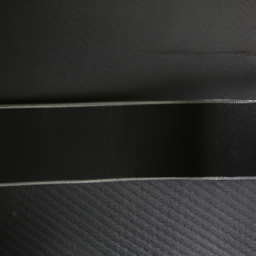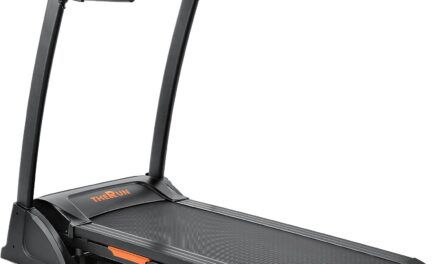If you’re in the market for a treadmill, you might be wondering how much noise these machines produce during use. Well, look no further! In this article, we’ll examine the varying noise levels of treadmills and help you understand what to expect when you step onto that running surface. From whisper-quiet models to those that emit a low hum, we’ll guide you through the world of treadmill noise production, ensuring that you find the perfect fit for your exercise needs without sacrificing your peaceful home environment. So, let’s get started on this noise-free journey to finding the ideal treadmill for you!
1. Motor Power
When it comes to treadmills, one of the key factors that can affect the noise production during use is the motor power. The motor of a treadmill provides the necessary power to move the belt and allow you to exercise.
1.1. Motor Noise
The noise generated by the motor can vary depending on its power and quality. Higher-powered motors are generally louder compared to lower-powered ones. This is because more power requires more effort from the motor, which can result in increased noise levels.
However, advancements in motor technology have allowed manufacturers to develop quieter motors without compromising on power. Many treadmills now come with specially designed motors that reduce noise by using efficient cooling systems and noise-reducing technology. So, when choosing a treadmill, it’s important to consider the motor noise and opt for a model that offers a balance between power and quiet operation.
1.2. Motor Power and Noise Relation
It’s worth noting that while higher-powered motors may produce more noise, they also offer certain advantages. A powerful motor can withstand heavier loads and provide a smoother running experience. Additionally, it can provide a wider range of speeds and incline levels, allowing for a more versatile workout. So, if noise is not a major concern for you, opting for a treadmill with a higher motor power may be beneficial in terms of functionality.
2. Belt Material
The belt material is another factor that can significantly impact the noise production during treadmill use. The belt is the surface on which you run or walk, and its material composition plays a crucial role in determining the level of noise generated.
2.1. Belt Noise
Treadmill belts can be made from various materials such as rubber, PVC, or polyester. Each material has its own unique properties that can affect noise levels. For example, rubber belts tend to absorb impact and reduce noise, making them a popular choice for quieter treadmills. PVC belts, on the other hand, may produce more noise due to their harder surface.
When selecting a treadmill, consider opting for models with belts that have noise-reducing features. These features can include multiple layers or cushioning systems that absorb sound and vibrations, resulting in a quieter workout experience.
2.2. Belt Durability and Noise
While reducing noise is important, it’s also crucial to consider the durability of the belt. A worn-out or damaged belt can lead to increased noise levels as it may produce friction against the rollers or deck. It’s essential to regularly maintain and replace the belt when necessary to ensure both a quiet and safe workout.
3. Cushioning System
The cushioning system of a treadmill is responsible for absorbing impact and reducing the strain on your joints and muscles. It can also influence the overall noise production during use.
3.1. Impact Absorption
A cushioning system that effectively absorbs impact can help reduce the noise caused by your foot hitting the running deck. It does this by absorbing and dissipating the force generated during each step, resulting in less noise transmission. Treadmills with high-quality cushioning systems can offer a quiet and comfortable running experience.
When researching treadmills, look for models that feature advanced cushioning technologies such as adjustable deck suspension or variable durometer elastomers. These systems offer customizable levels of cushioning, allowing you to choose a setting that best suits your preferences and reduces noise.
3.2. Noise Reduction
In addition to impact absorption, some cushioning systems are specifically designed to reduce noise. These systems incorporate additional materials or technologies that minimize vibrations and dampen sound transmission. By reducing the vibrations caused by foot impact, these cushioning systems can contribute to a quieter and more enjoyable workout session.
4. Frame Construction
The construction of the treadmill frame plays a vital role in determining its overall noise production. The material used and the overall sturdiness of the frame can impact the level of noise generated during use.
4.1. Material and Noise
The material used for the frame can influence the noise levels emitted by the treadmill. Some materials, like steel or aluminum, are known for their durability and ability to absorb vibrations, resulting in lower noise levels. On the other hand, certain lightweight materials may transmit more vibrations, leading to increased noise.
When choosing a treadmill, consider opting for models with frames made from high-quality materials known for their noise-reducing properties. This can help ensure a quieter workout environment and enhance the overall functionality and longevity of the treadmill.
4.2. Sturdiness and Noise
Apart from the material, the sturdiness of the frame also affects the noise production. A stable and sturdy frame provides better support and reduces the chances of excessive vibrations or wobbling. This, in turn, can help minimize the noise generated during use.
Before purchasing a treadmill, it’s advisable to check the stability and build quality of the frame. Take time to read customer reviews or visit a store to physically test the treadmill and assess its sturdiness. Ensuring that the frame is solid and well-constructed can go a long way in reducing noise levels and providing a more enjoyable workout experience.
5. Incline Mechanism
Many treadmills offer an incline feature that allows you to adjust the angle of the running surface. While this feature can enhance your workout by simulating uphill running, it can also contribute to the overall noise production.
5.1. Noise During Incline Adjustments
The mechanism responsible for adjusting the incline can sometimes produce noise during operation. This can be caused by the gears or motors used to change the angle of the running surface. When choosing a treadmill, consider models that have a smooth and quiet incline mechanism, ensuring that adjusting the incline doesn’t interfere with your workout experience.
5.2. Incline Motor Noise
In some cases, the motor responsible for adjusting the incline can generate noise. Higher-powered incline motors may produce more noise due to their increased workload. It’s important to consider the noise levels of the motor when selecting a treadmill with an incline feature, especially if you prefer a quieter workout environment.
6. Electronic components
Treadmills often come equipped with various electronic components such as control panels and built-in speakers. These components can impact the level of noise produced during use.
6.1. Control Panel Noise
The control panel, which allows you to adjust settings and monitor your workout, can sometimes generate noise. This can be due to the buttons or touch-sensitive panels making clicking or beeping sounds when pressed.
When selecting a treadmill, consider models that have control panels known for their quiet operation. Look for control panels that use silent or soft-touch buttons to minimize noise. This way, you can focus on your workout without any distractions.
6.2. Speaker Noise
If your treadmill comes with built-in speakers, they can add an element of entertainment to your workout by playing music or audio from workout programs. However, it’s worth noting that the quality of the speakers can affect the noise levels. Lower-quality speakers may produce distorted or crackling sounds, which can be distracting and unpleasant.
When considering a treadmill with built-in speakers, read reviews or listen to audio samples to determine the quality of the sound output. Choosing a treadmill with high-quality speakers can enhance your workout experience without adding unnecessary noise.
7. Running Deck Size
The size of the running deck, which refers to the surface on which you run or walk, can affect the noise produced during treadmill use. The dimensions of the running deck can impact both footfall noise and overall treadmill noise levels.
7.1. Footfall Noise
The size and construction of the running deck can influence the noise caused by your foot hitting the surface. A larger running deck provides more room for your feet to land, potentially reducing the noise produced by each step. Additionally, treadmills with well-cushioned or shock-absorbing running decks can also help minimize footfall noise.
When considering a treadmill, choose a model with a running deck size that suits your needs and preferences. If you prioritize noise reduction, opt for treadmills that offer a larger running surface and advanced cushioning systems.
7.2. Deck Size and Noise
Apart from footfall noise, the size of the running deck can also impact the overall noise levels emitted by the treadmill. A larger deck can provide more stability, preventing excessive vibrations or wobbling that can contribute to noise production. Additionally, a larger deck may also allow for a smoother running experience, resulting in reduced noise.
When selecting a treadmill, consider models with larger running deck sizes to potentially minimize overall noise levels. This can be particularly beneficial for those looking for a quiet and comfortable workout environment.
8. Maintenance and Lubrication
Regular maintenance and proper lubrication play a crucial role in minimizing noise production during treadmill use. Neglecting these aspects can lead to increased friction, which in turn results in higher noise levels.
8.1. Noise Due to Lack of Maintenance
A treadmill that is not properly maintained can produce excessive noise due to various reasons. Accumulated dirt, debris, or dust can cause friction between the belt and the rollers, resulting in squeaking sounds. Loose or damaged components can also lead to increased noise levels.
To minimize noise caused by lack of maintenance, it’s important to follow the manufacturer’s guidelines for regular cleaning and upkeep of the treadmill. This includes cleaning the belt, lubricating the deck, and inspecting and tightening any loose parts. By adhering to a maintenance routine, you can keep your treadmill in optimal condition, ensuring a quieter and more enjoyable workout experience.
8.2. Lubrication and Noise Reduction
Proper lubrication is essential for reducing friction and noise generated by the treadmill components. The belt and the deck should be adequately lubricated to ensure smooth and quiet operation. Insufficient lubrication can result in increased noise levels as the belt rubs against the deck, leading to excessive friction.
When maintaining your treadmill, make sure to use the recommended lubricants and follow the manufacturer’s instructions. Regularly lubricating the key components can significantly reduce noise, extend the life of your treadmill, and enhance your overall workout experience.
9. User Weight Capacity
The weight capacity of a treadmill refers to the maximum weight it can safely support. While user weight capacity may not directly impact noise production, it can indirectly influence noise levels during use.
9.1. Noise with Higher User Weight
Treadmills are designed to absorb impact and vibrations generated during use. When a user exceeds the weight capacity, it can lead to increased stress on the belt, deck, and overall treadmill structure. This can result in louder noise levels as the components struggle to withstand the extra force.
To minimize the noise caused by higher user weight, it is important to select a treadmill with a weight capacity that accommodates your needs. Using a treadmill within its specified weight limit ensures optimal performance and quieter operation.
9.2. Weight Capacity and Noise
While noise production may not be directly related to weight capacity, it’s worth considering how a higher weight capacity can impact overall noise levels. Treadmills with higher weight capacities are typically built with stronger and more durable components. This can contribute to a quieter workout experience as the treadmill is better equipped to handle heavier loads without excessive noise or vibration.
When choosing a treadmill, if noise reduction is a priority, consider selecting a model with a higher weight capacity. This can help ensure a more stable and quieter workout environment, even if you are nearing or surpassing the weight limit.
10. User Technique
The way you run or walk on the treadmill can also influence the noise levels produced during use. Your running technique and form can affect the impact and vibrations transmitted to the treadmill, resulting in varying noise levels.
10.1. Noise Caused by Running Style
If your running style involves heavy footstrikes or erratic movements, it can contribute to louder noise levels. Each forceful step generates more impact and vibrations that are transmitted to the treadmill, resulting in increased noise. It’s important to be mindful of your running technique and strive for a smooth and controlled stride to minimize noise production.
10.2. Proper Techniques to Reduce Noise
To reduce the noise generated by your running style, focus on maintaining a stride that is light and efficient. Avoid heavy footstrikes by landing softly and using proper running mechanics. Engaging in regular strength and conditioning exercises can also help improve your running technique, reducing the impact and noise produced during treadmill workouts.
Additionally, consider wearing appropriate footwear that provides ample cushioning and support. High-quality running shoes can help absorb shock and reduce the noise generated by foot impact.
In conclusion, treadmills can vary significantly in terms of noise production during use. Factors such as motor power, belt material, cushioning system, frame construction, incline mechanism, electronic components, running deck size, maintenance, user weight capacity, and user technique all play a role in determining the noise levels of a treadmill. When selecting a treadmill, consider your preferences and priorities, such as noise reduction, and choose a model that offers the features and qualities that align with your needs. By understanding how these various factors contribute to noise production, you can make an informed decision and find a treadmill that provides a quiet and enjoyable workout experience.





